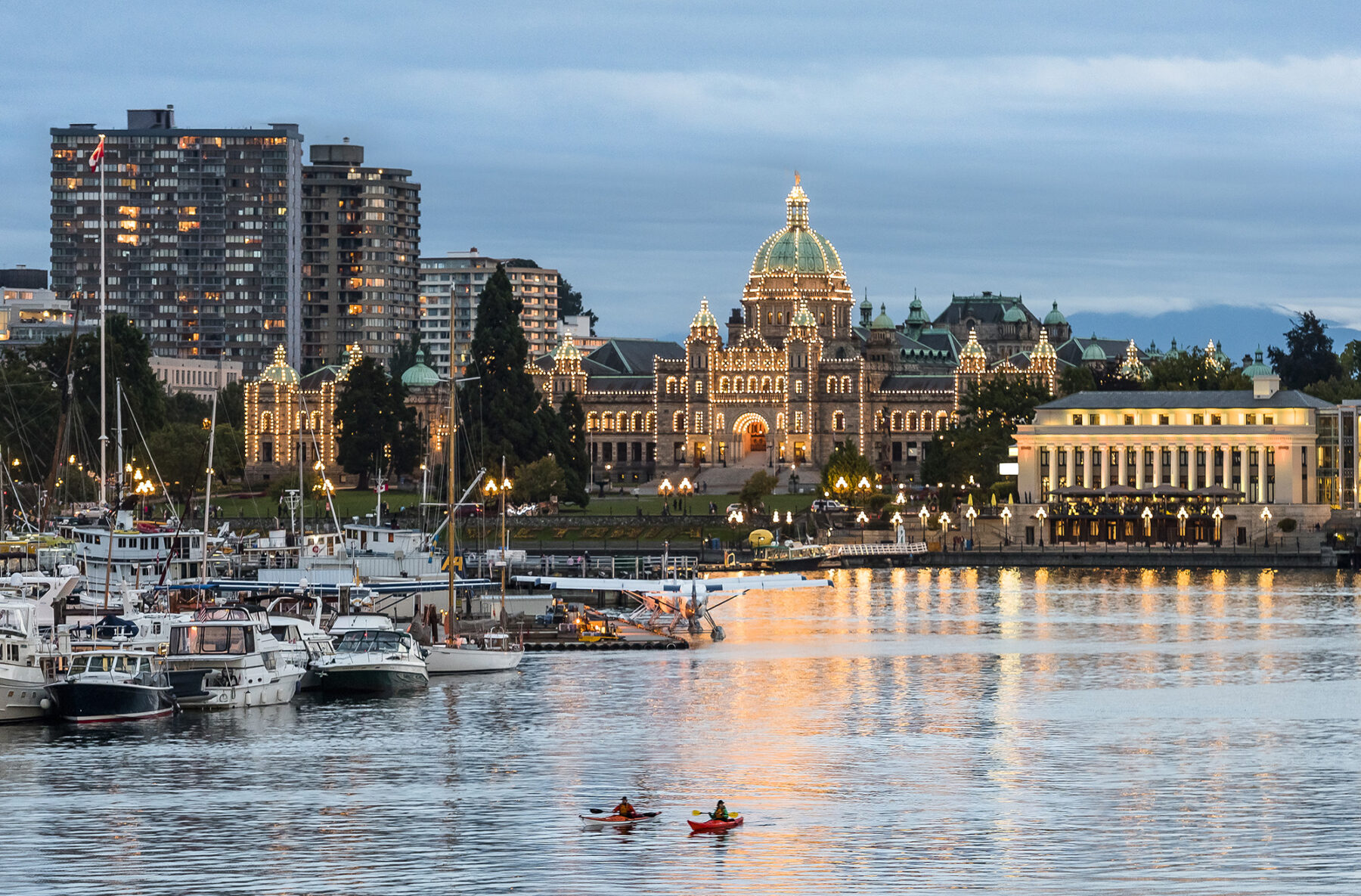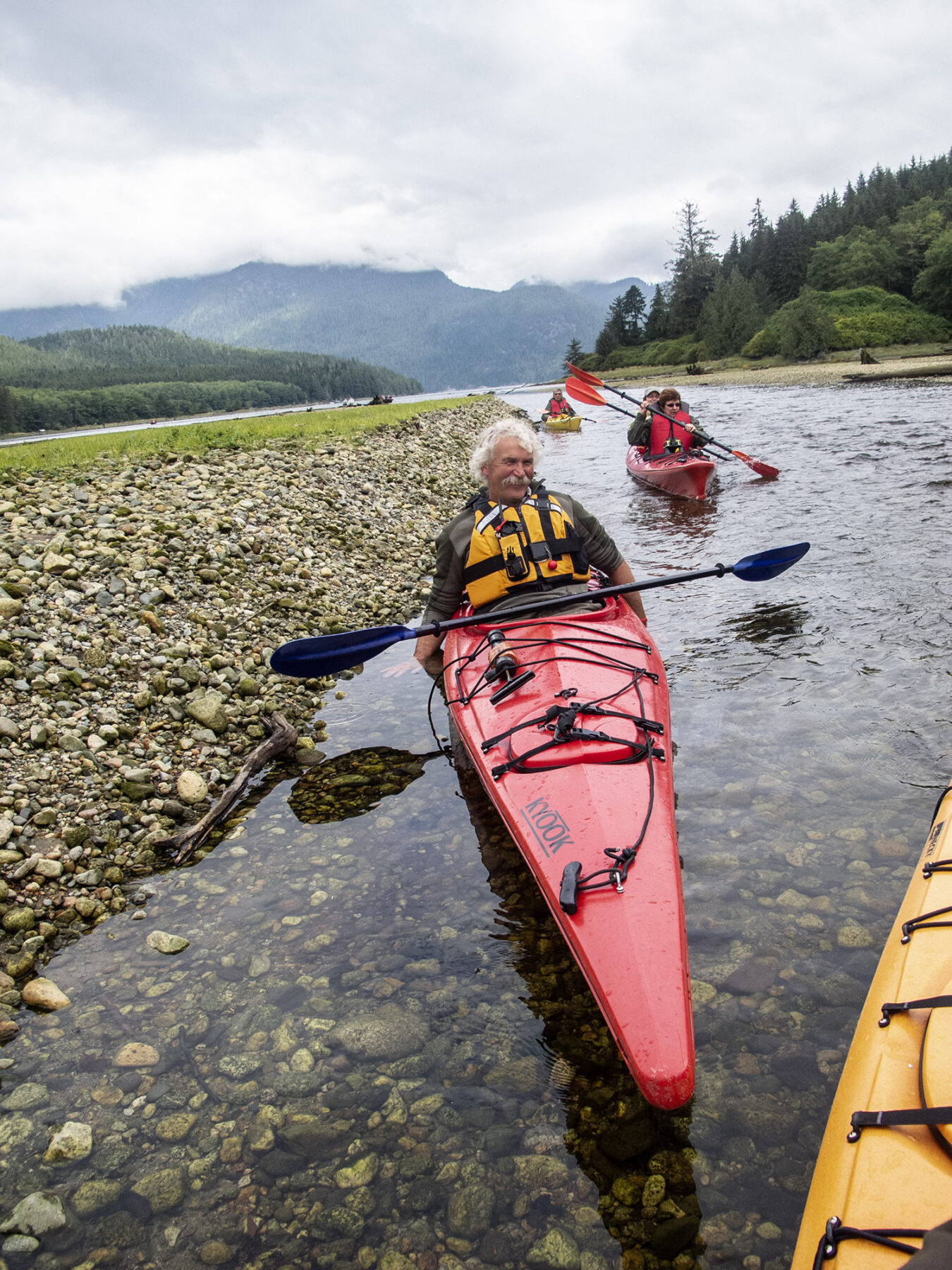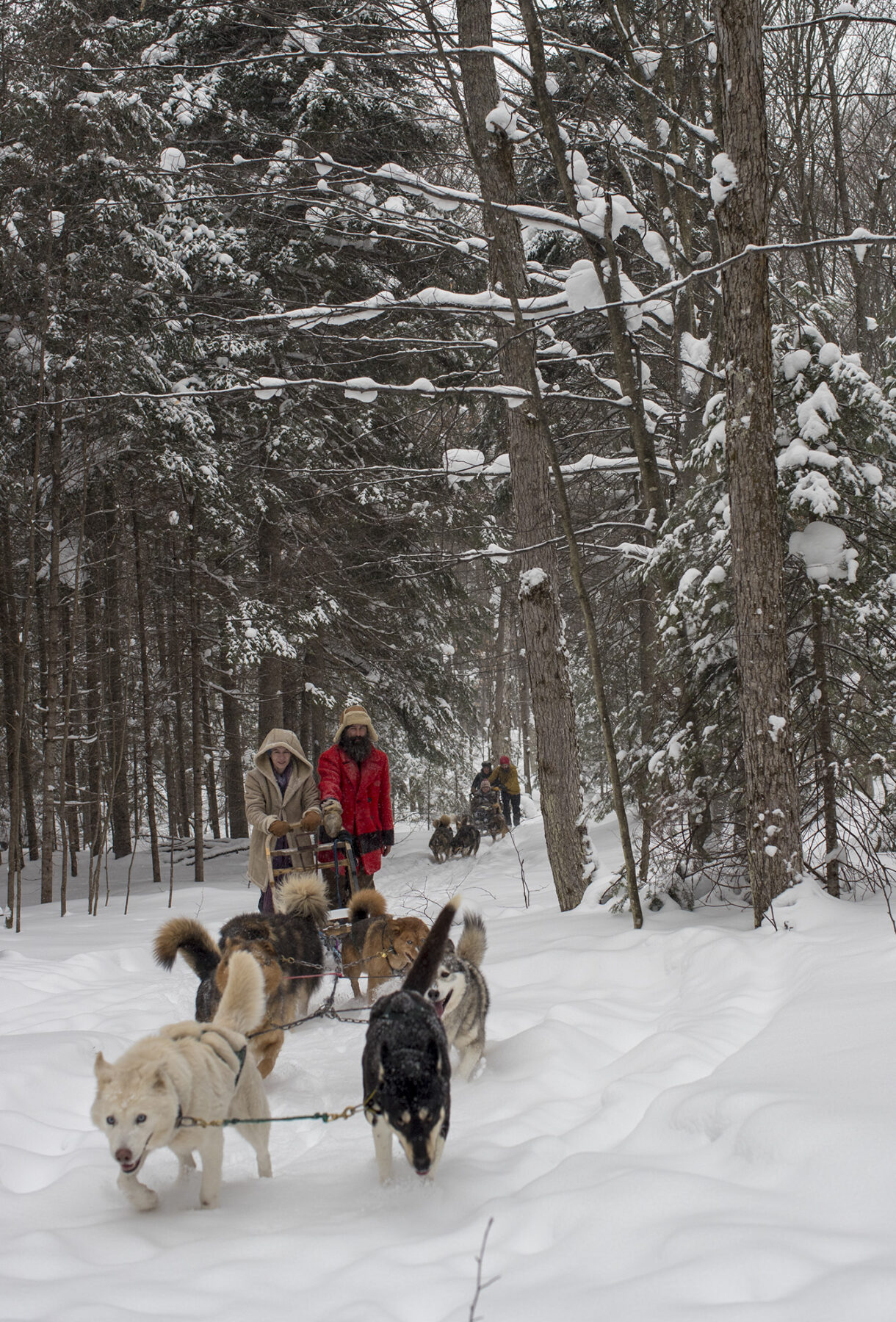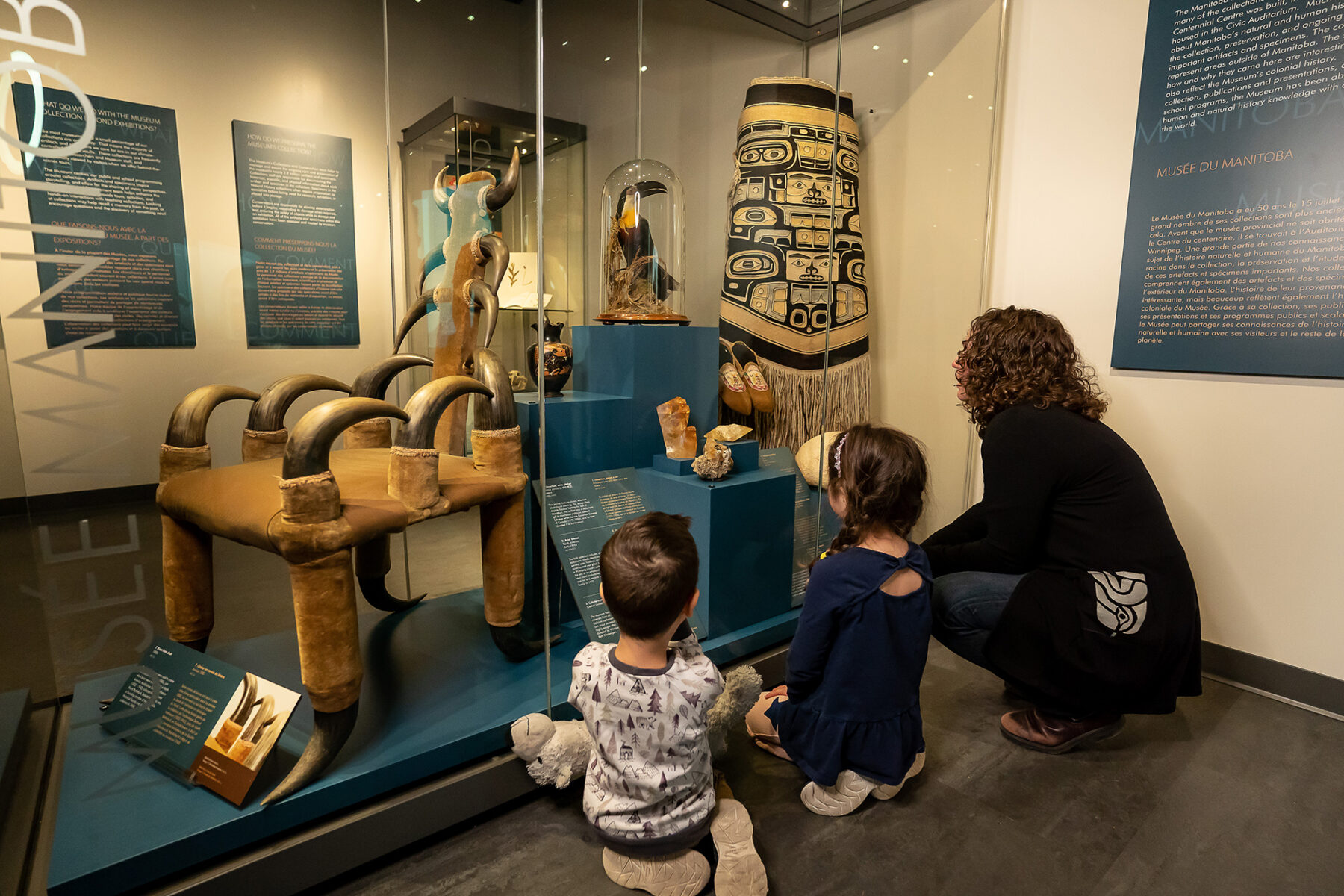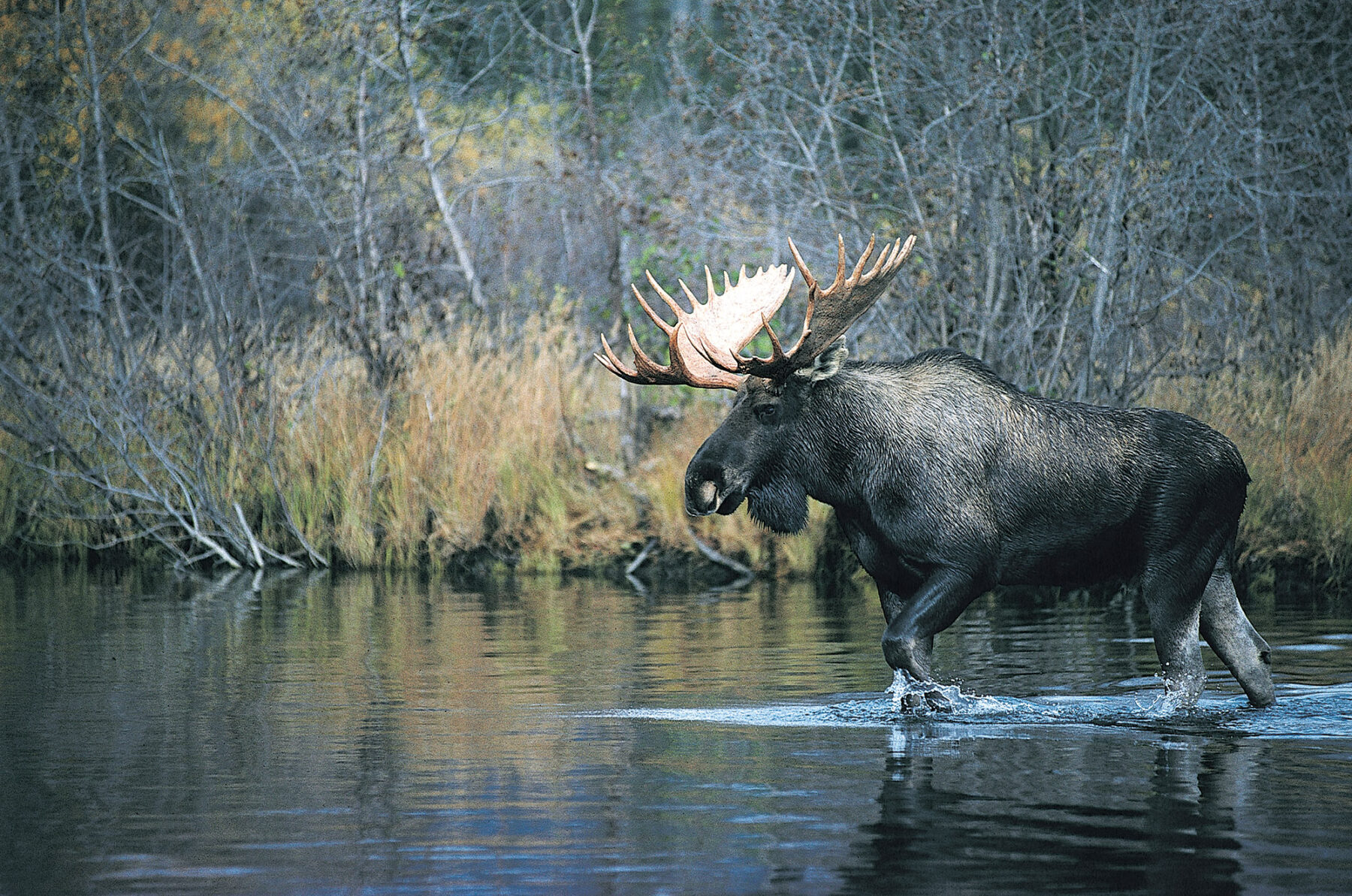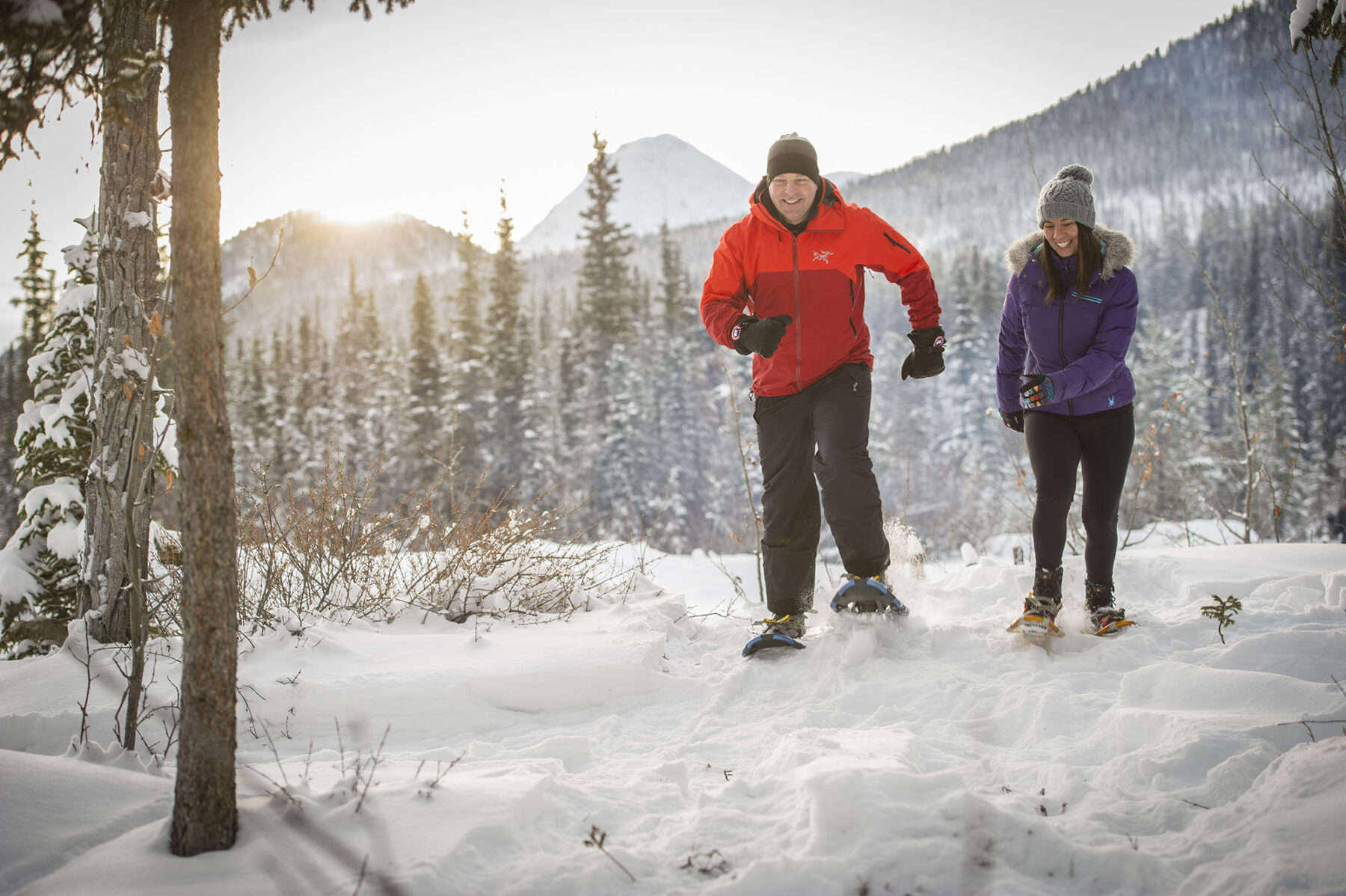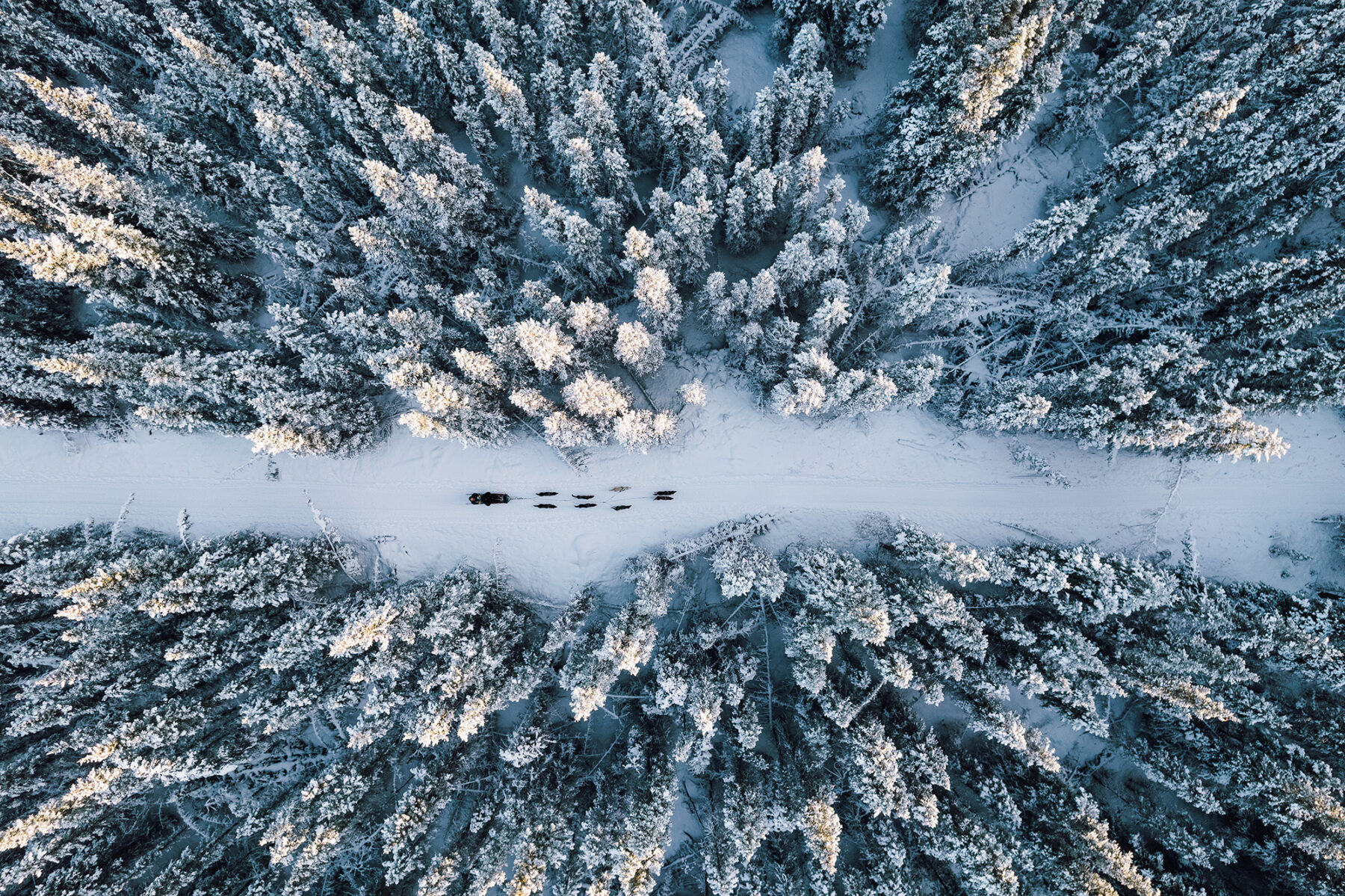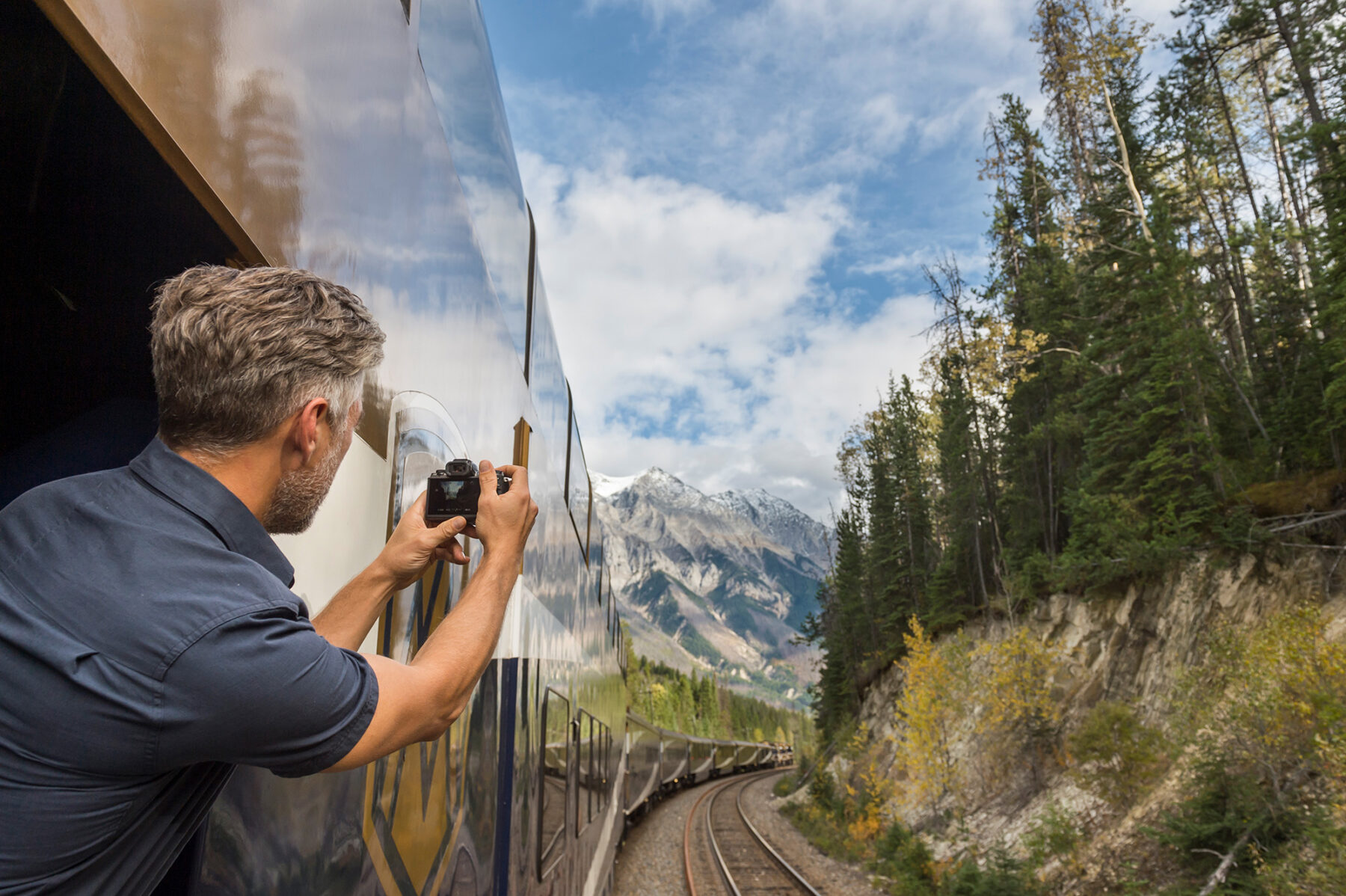Everything about Canada is big, with the landscapes, the wildlife, and the ways in which you can explore it, all combining to offer incredible opportunities for adventurous travellers. What do four of Canada’s provinces – and one epic train – have in common? They all offer an enriching experience of this huge country, from British Columbia and Manitoba’s wildlife viewing to Ontario’s many lakes, the spectacular Northern Lights of the Yukon Territory, and the Rocky Mountaineer rail journeys that offer a magical and timeless way in which to travel. Here’s how you do it…
British Columbia: On the edge of a wild world
From its vibrant capital to its iconic wildlife and rich Indigenous culture, exploring BC’s west coast and Vancouver Island provides a truly immersive experience.
Victoria: the adventurer’s capital
When it comes to a capital city that is most suited to adventurous travellers, Victoria, on Vancouver Island, is an absolute stand-out. The provincial capital of British Columbia is not only living proof a sustainable city is possible, through its many eco-friendly programs and implementations, it is also the gateway to the adventurous side of Vancouver Island and all of its incredible outdoor, wildlife and culture. Best of all, any Vancouver Island adventure begins in the city itself; myriad cycle paths and trails take two-wheeled visitors on a number of tours through this beautiful city, whether it is to visit some (or all?) of its famous craft breweries (yes, there are craft brewery cycle tours!) or restaurants, to cycle the pristine harbourside, or to venture out into Greater Victoria’s historic and culturally rich neighbourhoods, the city’s cycle routes make it easy.
Venture slightly out of town and you’ll also experience the amazing Malahat Skywalk (this is located on the lands of the Malahat Nation), an elevated walk that takes visitors through coastal rainforest on its way to a 10-storey-high spiral tower lookout that provides all-encompassing views out across the Pacific to the North American west coast.
For marine-mammal lovers, Victoria is home to Orca Spirit Adventures, which offers a variety of one-day viewing tours, in the Salish Sea, Victoria’s pristine (and very clean) Inner Harbour, and further around on the west side of the island out of the pretty coastal town of Port Renfrew. Thanks to the mild winters of the west coast, the tours run all year round, with plenty of marine life to see in the cooler months, too.
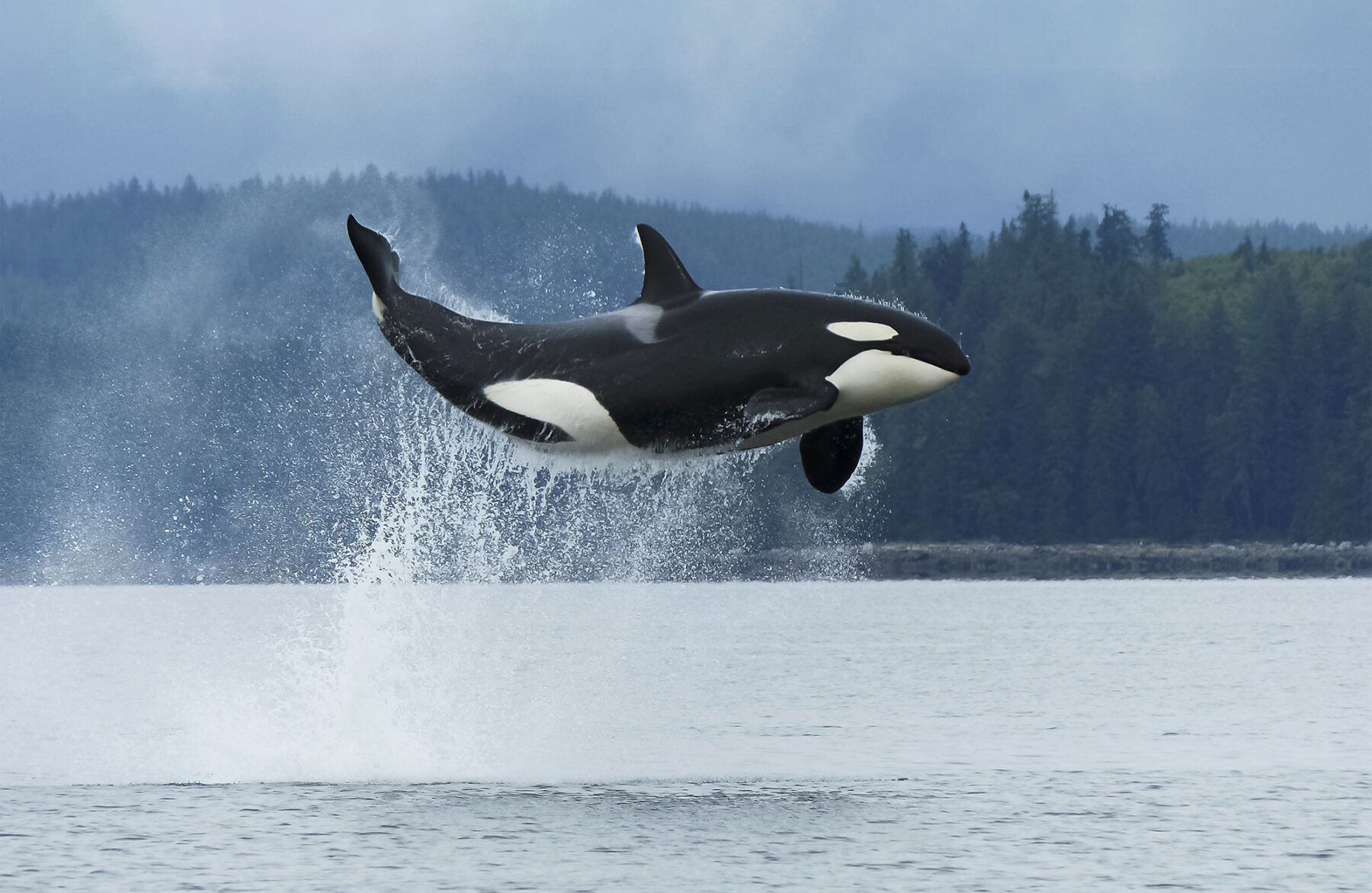
The wild west
Vancouver Island’s west coast is packed full of adventure opportunities, whether that is sea kayaking off the coast at Tofino, exploring nearby Meares Island and its spectacular old-growth forests, or experiencing Pacific Rim National Park. This park hugs the western side of the island and is also home to the famous West Coast Trail, regarded as one of the world’s best multi-day treks –and one of the most popular; advance reservations are a must (this writer has done this trek and can say it’s worth of all it accolades).
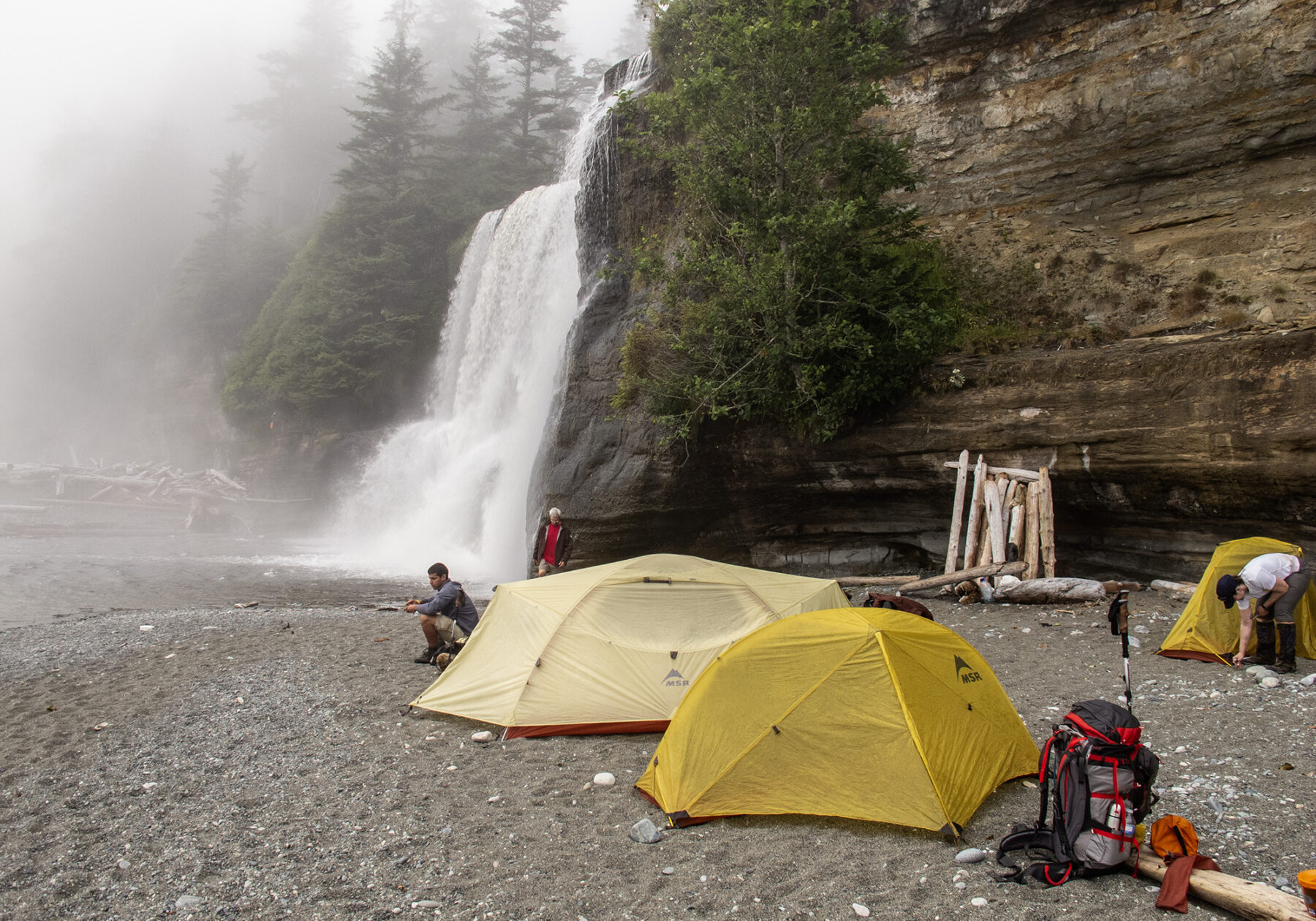
The WCT follows an old route used by shipwreck survivors and their rescuers along ruggedly beautiful coastline and coastal forest. It is simply magic; each night’s campsite is on a beach, providing opportunity to view the island’s iconic wildlife, such as whales, orca, black bears and even cougar (Vancouver Island has the world’s largest concentration of cougar).
An island road-trip like no other
Along with its plethora of adventure activities and thriving Indigenous culture, British Columbia is rightly famous for its wildlife. From black bear and grizzly bear (and the ultra-rare Kermode – or ‘Spirit’ – bear, found only in certain pockets of the Great Bear Rainforest), its population of resident (and transient) orca, variety of whales species, wolves, otter, cougar and – of course – salmon and the bald eagle (among a rich and varied native birdlife population), this province has it all when it comes to wildlife viewing.
Vancouver Island offers a number of ways in which to view most of these animals (including black bear, orca, whales, coastal wolves, cougar, otter, and eagles) with a short ferry ride across Johnstone Strait to the Great Bear Rainforest on the west coast of the BC ‘mainland’, covering off the big-bopper grizzly (and the Spirit bear).
Coastal cruising
Leaving Victoria and heading north along the east coast, it is easy to spend a week stopping off along the way to take in a number of wildlife experiences – and cultural ones, as you travel through a number of First Nations territories. The drive up the island’s east coast is a leisurely one, always with one eye peeled for wildlife. A hub for visitors is Campbell River, a fishing city of more than 35,000 that is also a great basecamp for some exploration of nearby Elk Falls Provincial Park, with its waterfalls and old-growth forest, the excellent maritime museum, the many hiking and bike trails surrounding the city.
For paddlers, there is guided sea kayaking, exploring the Discovery Islands archipelago and canoeing, either on a short day trip in Main Lake Provincial Park, or the hard-core, multi-day, 12-lake Sayward Forest Canoe Route. Another must-visit here is the Quinsam River Salmon Hatchery, which plays a role in ensuring natural spawning runs of this fish stay at the appropriate level. Its interpretive centre also informs visitors of the life cycle – and its importance of – salmon to BC’s entire ecosystem.
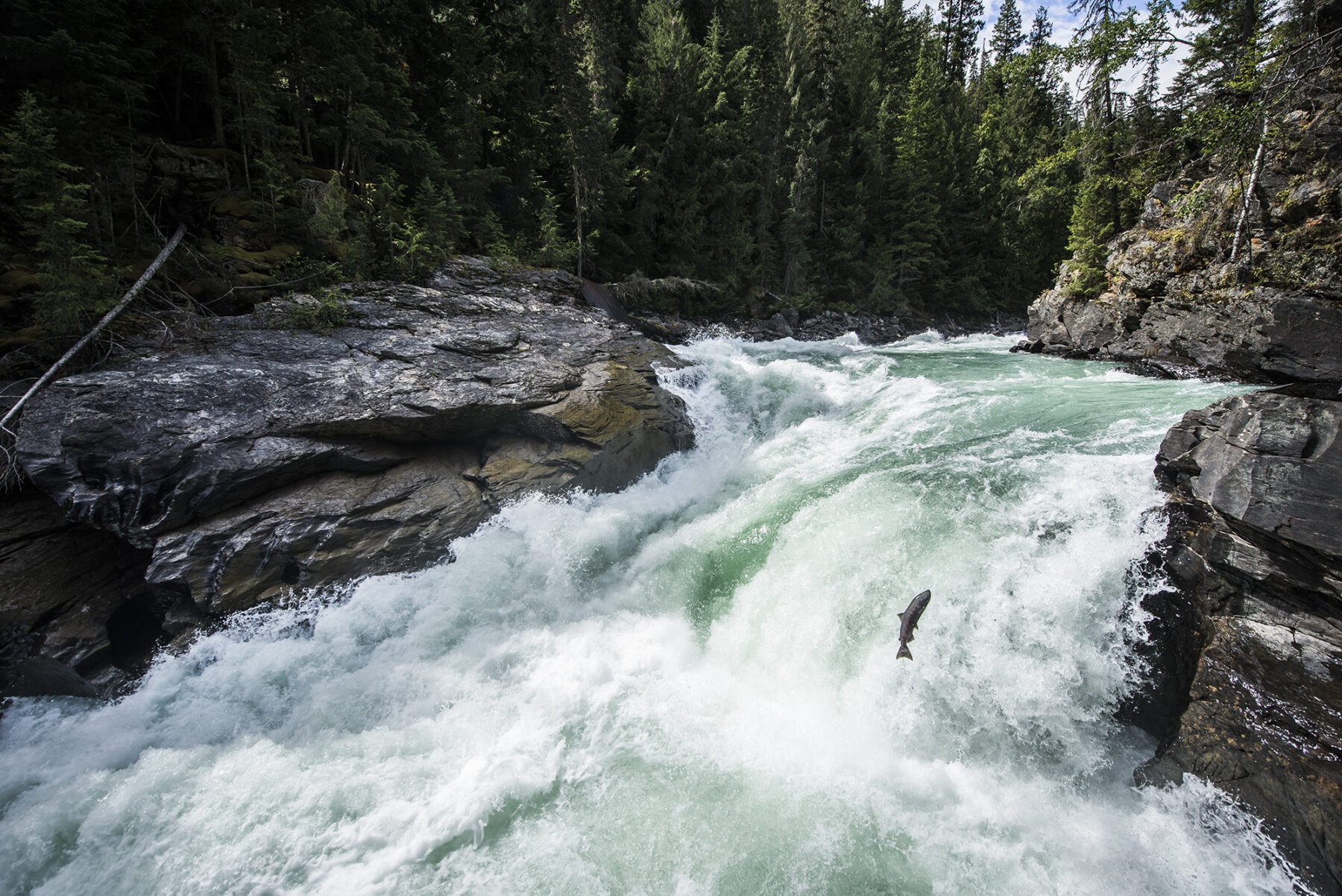
If there’s one must-do on any visit to Campbell River, it is joining a Homalco Wildlife and Cultural Tours trip, with options covering wildlife and/or Indigenous culture and history. Whether you want to learn more about the First Nations history of this area, via a visit to the Homalco village site of Aupe (and its shy resident black bear), crossing the Salish Sea and thus also having the chance to spot whales, dolphins and orca. Other tours include a full-day adventure tin August that takes visitors to Bute Inlet’s Orford Bay for the annual salmon run – an incredibly vital part of this region’s ecology – where you’ll see bears chowing down on the fish to fatten themselves up before their winter hibernation. It’s simply brilliant.

The cove of dreams
Telegraph Cove, north of Campbell River and situated on the Johnstone Strait, is a historic fishing village that doubles as the staging point for some of the best whale-watching tours in BC. There are a variety of tour types, all exploring Johnstone Strait and the Broughton Archipelago, with the chance to spot some of the orca that frequent the strait, as well as whales, dolphins, otter and sea lions. Kayaking is also popular here, as is fishing. Telegraph Cove’s Whale Interpretive Centre is worth a visit during your stay and the restaurants provide (as you’d expect) the freshest seafood you can imagine.
The land of the bear
Think British Columbia and, invariably, bears will come to mind, and more usually, it’ll be an image of the mighty grizzly bear that pops into your head. Fittingly, then, it is BC where you will find the bears’ spiritual and physical homeland: the Great Bear Rainforest. One of the largest areas of unspoiled temperate rainforest in the world, this 6.4-million-hectare wilderness, stretches from the Discovery Islands in the south of BC, north to the BC-Alaska border. This incredible wilderness is home to a number of BC’s First Nations, as well as all of BC’s native animal icons – black, grizzly and Kermode (Spirit) bears, cougar, wolves, salmon and some ancient (read: over 1000 years old) timber, including western red cedar and spruce trees. So, you might think this is probably a good place to see bears and other wildlife in their native habitat – and you’d be correct…
There are a number of bear-viewing lodges in BC, with some of the most unique being accessible from Vancouver Island, via floatplane out of Campbell River or Port Hardy. The Indigenous-owned Knight Inlet Lodge (accessed via floatplane from Campbell River) is nestled at the end of BC’s longest fiord of the same name, in the southern part of the Great Bear Rainforest. This lodge (along with Great Bear Lodge – more on this lodge below) is unique in the fact it is of a floating construction, and it is an incredible sight from the air as you fly in (usually in one of BC’s aviation icons – a de Havilland Otter floatplane) from Campbell River.
As well as excellent bear-viewing opportunities (from viewing stands and small skiffs) during the peak autumn season, the lodge offers whale watching, marine tours, kayaking (this writer viewed grizzly bear from a kayak during a four-day stay at the lodge), walking tours and an excellent interpretive tracking tour.
Great Bear Lodge, located further north in the Great Bear Rainforest, on the BC central coast, floats at the head of Smith Inlet, fully immersed in its surrounding marine environment, and moving gracefully with the tides. Accessed from Port Hardy, on the northeast coast of Vancouver Island, via an amazing seaplane flight, Great Bear Lodge is the only one in this valley, making for an exclusive and enriching experience in this wild part of the world. With, literally, no-one else around, it also ensures you’ll see more bear than people – and that has to be a brilliant thing. As part-owner Marg Leehane says, “It’s a luxury to be in a place where we see more bears than people.” And it is…
The viewing platforms at Great Bear Lodge are a mix of covered and open for optimum immersion in the environment while watching the bears chase salmon in the waterways. Boats are also utilised (depending in river heights and salmon locations). As you’d expect, all the meals at the lodge are freshly caught and/or use local produce.
Inside another world
The recurring theme when describing this part of British Columbia is, without doubt, that of ‘total immersion’. From the in-depth and informative Indigenous-led cultural and wildlife tours, to other outdoor experiences with knowledgeable local guides, to the BC environment itself, visitors to British Columbia have an over-abundance of opportunities to immerse themselves, totally, in one of the world’s most unique regions.
Falling for Ontario
Embrace vibrant communities, breathtaking wilderness, cultural icons and some of Canada’s best outdoor playgrounds in Ontario’s autumn and winter.
One of the best things about travelling is exploring the roads less travelled, when less people are travelling. With sustainable travel now at the forefront of many travellers’ minds, finding a way to stay away from the madding crowds is front and centre. By going in the less busy seasons of autumn and winter, you are spreading the love and lightening the load for the locals. But one thing that won’t be lessened is Ontario’s striking natural beauty, innovative culinary delights (featuring locally grown foods, thanks to the provinces farmers that results in memorable dining), award-winning wineries, fantastic local artisans, unique traditions, authentic Indigenous experiences, and vibrant multicultural cities.
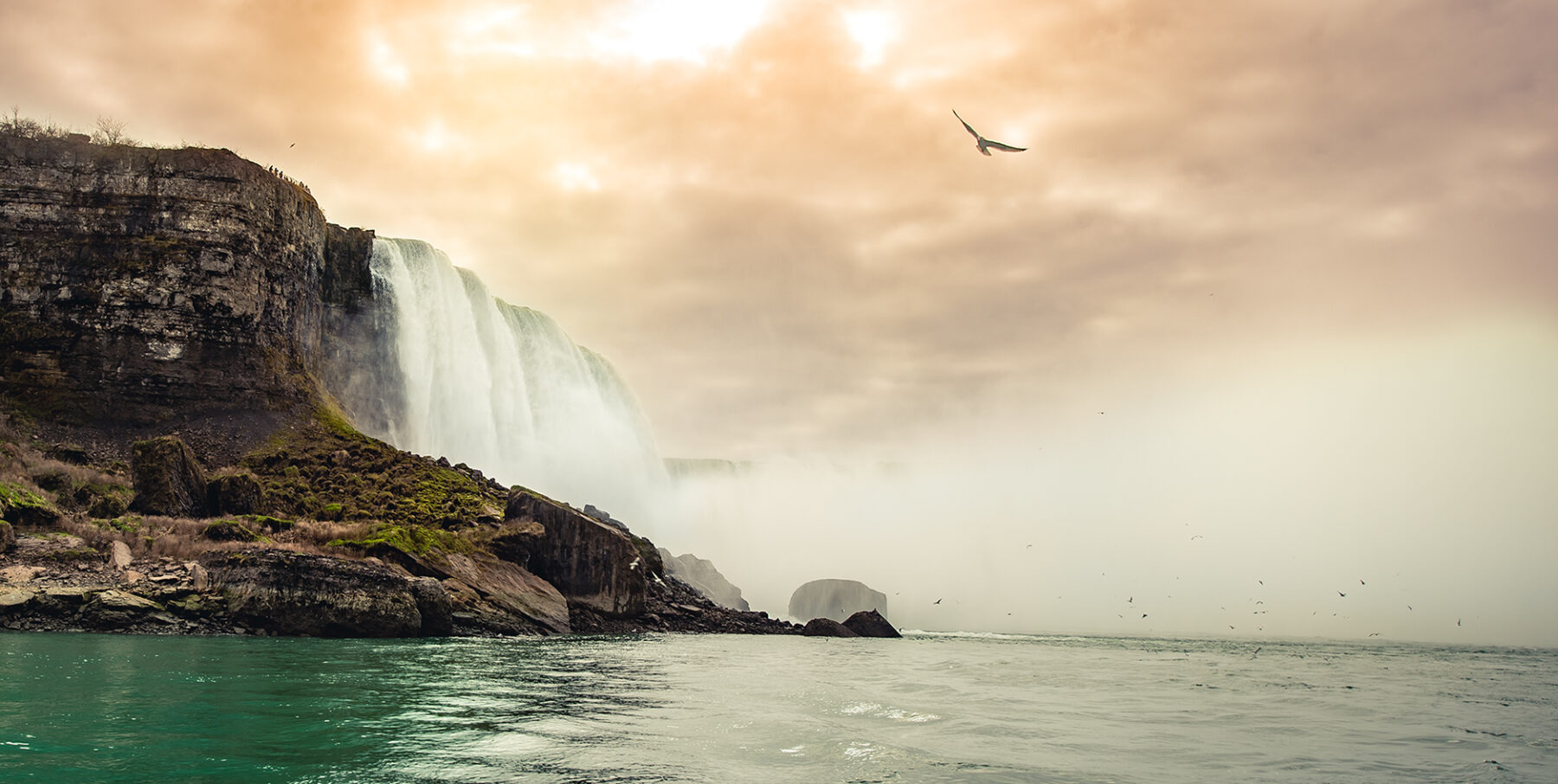
Ontario might boast spectacular cities such as Ottawa – the capital of Canada – and Toronto, both of which serve up myriad attractions, from museums to historic sights and adventurous pursuits, but it also boasts a plethora of majestic natural landscapes. With more than 250,000 lakes (including pristine Lake Ontario, Lake Huron and Lake Superior), 340 beautiful provincial parks and six national parks, as well as – of course – the world-famous Niagara Falls.
Autumn colours
The change of seasons from summer to autumn (fall) opens up an artist’s palette of colour in the forests of Ontario. Broad swathes of red and orange with a base of verdant green are truly enchanting and a photographer’s delight. After spending time in Toronto, a rich arts, culture and entertainment hub, venture out to discover the city’s little-known islands.
The 15 Toronto Islands, accessed on a short ferry ride from downtown, are perfect for a stroll to stretch legs after a long-haul flight, or just to get out into the fresh air. Walking around these small islands is easy, as they are all connected by boardwalks – just one example of how the locals (and visitors) love spending time outdoors here.

Under two hours north of Toronto, visit Keene, where you can stay in a private cottage, set in a landscape of tranquil lakes and the forest with its kaleidoscope of colour. You can kayak on the lake to take in nature’s artwork on the banks, or go for a hike among the trees, proudly showing their fall coats.
One of Ontario’s most spectacular landscapes awaits in the 1000 Islands region, home of the Thousand Islands National Park. Go for a cruise to marvel at the lush islands dotting the wide expanse of the St Lawrence River.
Winter wonders
With its crisp temperatures and plethora of outdoor adventures, Ontario is a breath of fresh air. Hiking, biking, ice skating, snowshoeing, dogsledding … the choices are endless.
Easily visited from Toronto, do a full day tour of Niagara Falls. One of Canada’s most popular sights, it’s just as beautiful in winter. Apart from the awe-inspiring views from above, from viewing platforms, or from below in a boat, don’t miss the Journey Behind the Falls tour. Walk through historic tunnels underground and emerge on the Observation Deck at the base of the 13-story high Horseshoe Falls. You will feel the power of the water, as well as its spray. The charming community of Niagara-on-the-Lake is also worth visiting.
Embrace your inner explorer with a stay in Algonquin Provincial Park. Go snowshoeing near Surprise Lake, or backcountry skiing on trails through snow-laden forest, then relax with a sauna, a good book by the fire, and cocktails. Dog sledding in this pristine environment will be a real treat, and you will even be able to ‘mush’ your own dog team.
Canada’s capital, Ottawa, also abounds with icy treats. This beautiful city on the Ottawa River, is home to Canada’s government with its three neo-Gothic buildings constructed between 1859 and 1927 standing sentinel on Parliament Hill. There are many wonderful museums, including the National Gallery of Canada and the Canadian Museum of History, with historic ByWard Market, established in 1826, always worth visiting for a beavertail.
One of Ottawa’s favourite winter activities is to go ice skating on the UNESCO World Heritage-listed Rideau Canal, which links the Ottawa River with Lake Ontario down in Kingston. In winter, the last section of the Canal turns in to the world’s longest naturally frozen skating rink – 7.8 kms. Some locals even skate to work.
Whether you go in autumn or winter, Adventure World has itineraries to suit, including the 13-day Fall Colours of Ontario tour, and the six-day Ontario Winter Adventure.
Manitoba: Canada’s outdoor heartland
This central Canada province is not just the home of the polar bear, it packs in plenty of other natural highlights for you to explore.

Manitoba is situated bang-on the longitudinal centre of Canada and hosts more than 100,000 lakes and waterways, along with more than 90 parks (including two national parks). As well as a variety of landscapes (from vast prairies to subarctic coastline) and one of Canada’s most amazing capital cities – that’d be Winnipeg – the population of 1.2 million includes a vibrant Indigenous culture, sharing the land with incredible wildlife; polar bears, wolves, beluga whales, bison and loads more roam free here. In short, for those after an escape that combines outdoor activities, culture, wildlife and that sense of vast open space – Manitoba is your answer.
A capital idea
Spending more than a few days in Winnipeg is a no-brainer: the capital of Manitoba is a thriving centre of around 750,000 people, and contains a mix of cultural and adventurous activities, whether visiting the city’s famous museums and eateries, or exploring some of the surrounding parks. For those with an outdoor bent, we’d suggest The Forks. This area of Winnipeg sits at the junction of the Assiniboine and Red rivers and includes murals (painted by Indigenous artists), restaurants, and you can take to the river on a boat tour. In winter, skate the Winnipeg Foundation Centennial Trail, the world’s longest naturally frozen ice-skating trail.
For cultural enrichment, it’s hard to go past Qaumajuq, a centre that houses the world’s largest collection of contemporary Inuit art (it is found inside the Winnipeg Art Gallery). ‘Qaumajuq’ translates as “it is bright, it is lit” in Inuktitut. For those who cannot make the journey north to polar bear country, the city’s Assiniboine Park Zoo is a must-visit; hosting a number of Arctic species, such as polar bears (of course – and in an expansive enclosure that accurately replicates their natural habitat), wolves, muskox and other species, plus educational and interactive displays, it is fantastic.
Cheeky locals and the big lights
Summer and early autumn means you can paddle waters of the Churchill River estuary to spot beluga whales (known as the ‘canaries of the sea’ due to their calls). There is an estimated 58,000 beluga that call Hudson Bay home each year, and around 4000 will spend time in the Churchill River estuary. You can kayak, sit aboard a boat or take a SUP out into the estuary to view them. Besides their unique ‘song’ and personality, beluga differ from other whales by not having fused neck vertebrae, allowing them to tilt their head to the side, leading to some cheeky glances at you in your kayak or boat as they glide past.
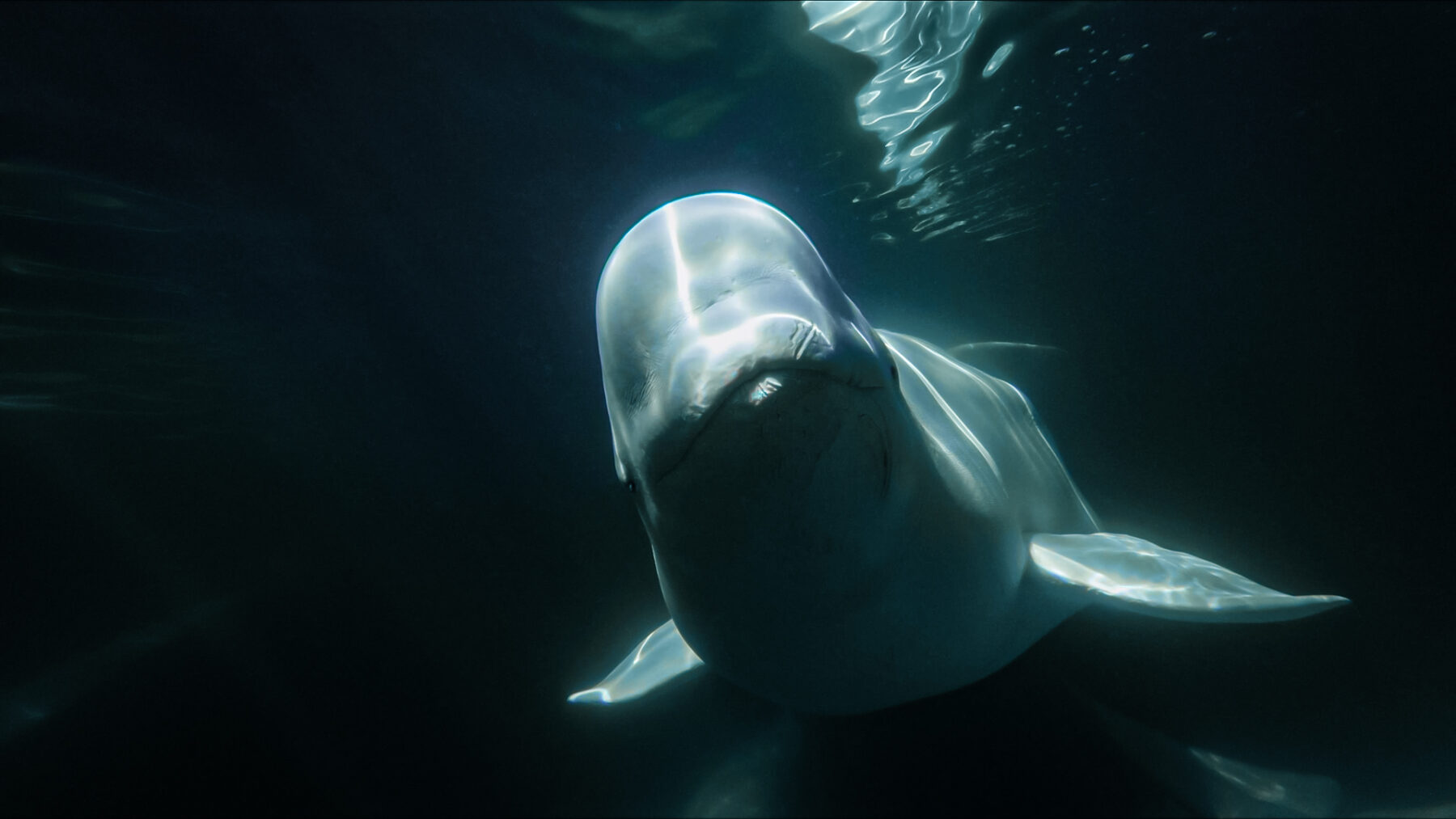
There’s a third, close to equally famous, natural resident of Manitoba that is a must-see: the Northern Lights, aka Aurora Borealis. The northern icon of Churchill is, again, one of the best places to be for Northern Lights viewing, with the peak season of February and March. You can see the famous dancing lights throughout Manitoba during certain times of the year as well, but with its northerly location, Churchill provides close to 300 nights of Northern Lights viewing. Yep, that’s impressive.
Where life is wild
Think Manitoba and polar bears instantly spring to mind, with good reason; being able to see these mighty bruins up close at Churchill and its surrounds in the far north is one of, if not the, province’s biggest highlights. However, these big boppers are not the only draw-card for wildlife lovers; those curious – okay, and cute – beluga whales are another, and then there’s bison, wolves, innumerable bird species (in autumn, Manitoba sees tens of thousands of migrating Canadian geese), caribou, moose, black bears, seals and Arctic fox, to name just a few, that populate the province’s wild areas.
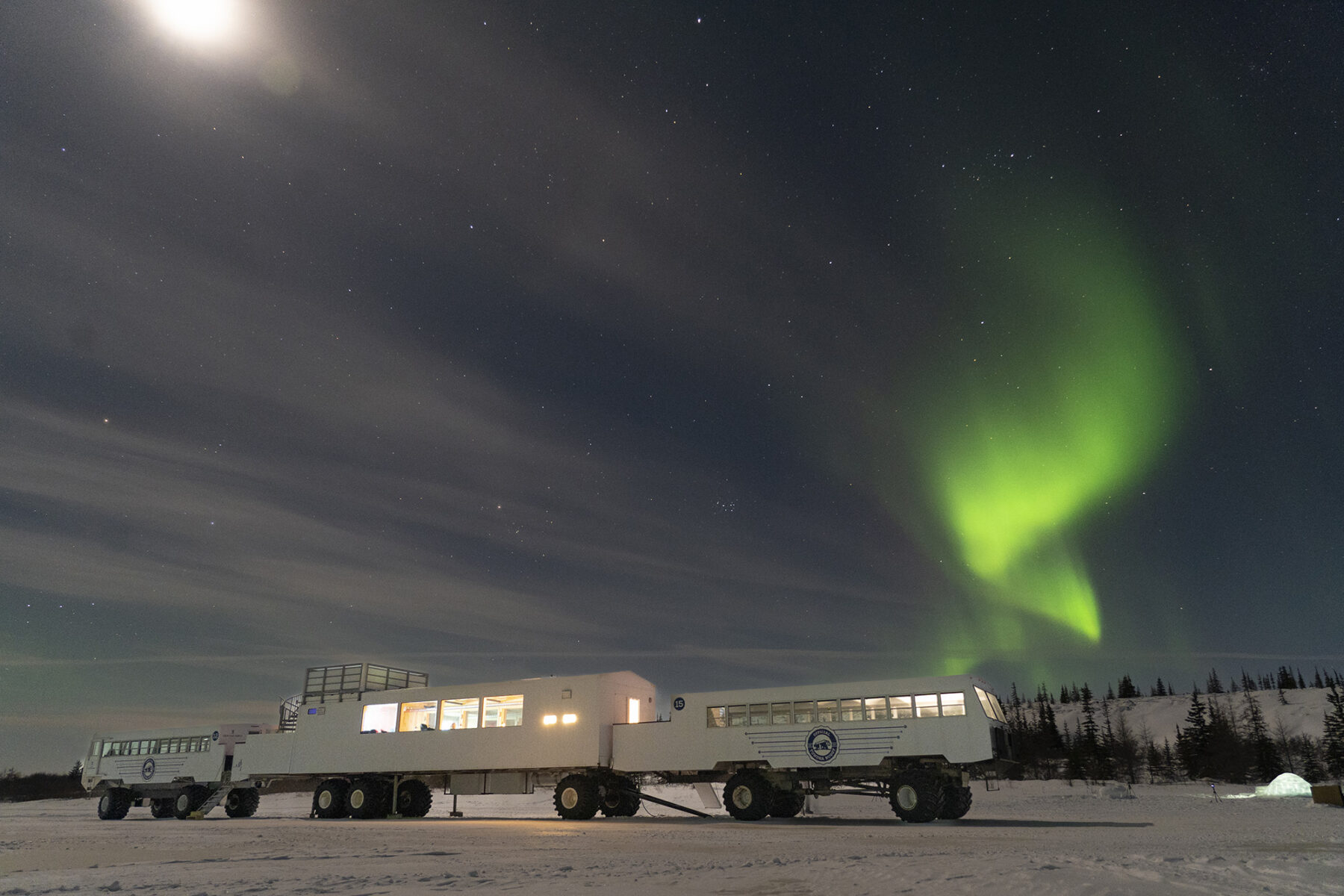
Churchill, population around 900, is known as the ‘polar bear capital of the world’, due to its location on the shores of Hudson Bay, and the bears’ gathering there as they wait for the bay to freeze over so they can then hunt seals while living on the sea ice. For optimum viewing, the middle of October until mid/late November is best. There are a number of ways in which to view the bears, from one-day adventures in big tundra vehicles, to multi-day stays at wilderness lodges.
For something truly unique, you can experience a few days aboard a tundra lodge stay. This comprises huge tundra vehicles joined together, with separate cars for sleeping quarters and dining, along with those for viewing. Fly-in wilderness lodges are brilliant, too, and some allow you to join polar bear hikes, where you are down on the bear’s level, with guides (known as ‘bear whisperers’) who ensure you get close, but you don’t impact the bears’ natural behaviour in any way. It’ll definitely answer that ‘call of the wild’!
Yukon Territory: Where the wild things are
“The Yukon”. Those two words immediately conjure images of a wild, remote land, and this territory is all that and much, much more.
The top of the world
“The Yukon”doesn’t just promise so much when it comes to adventure, wildlife, a thriving indigenous culture, unique history, and amazing landscapes, but it delivers. Whether it is viewing the province’s amazing wildlife, hiking into a mountain- and glacier-crowded wilderness, learning more about the First Nations culture and the gold-rush era, experiencing the natural phenomenon that is the Northern Lights (Aurora Borealis), or staying at a wilderness lodge, the Yukon offers all an adventurous traveller can dream of. And it does that through every season. Here’s how…
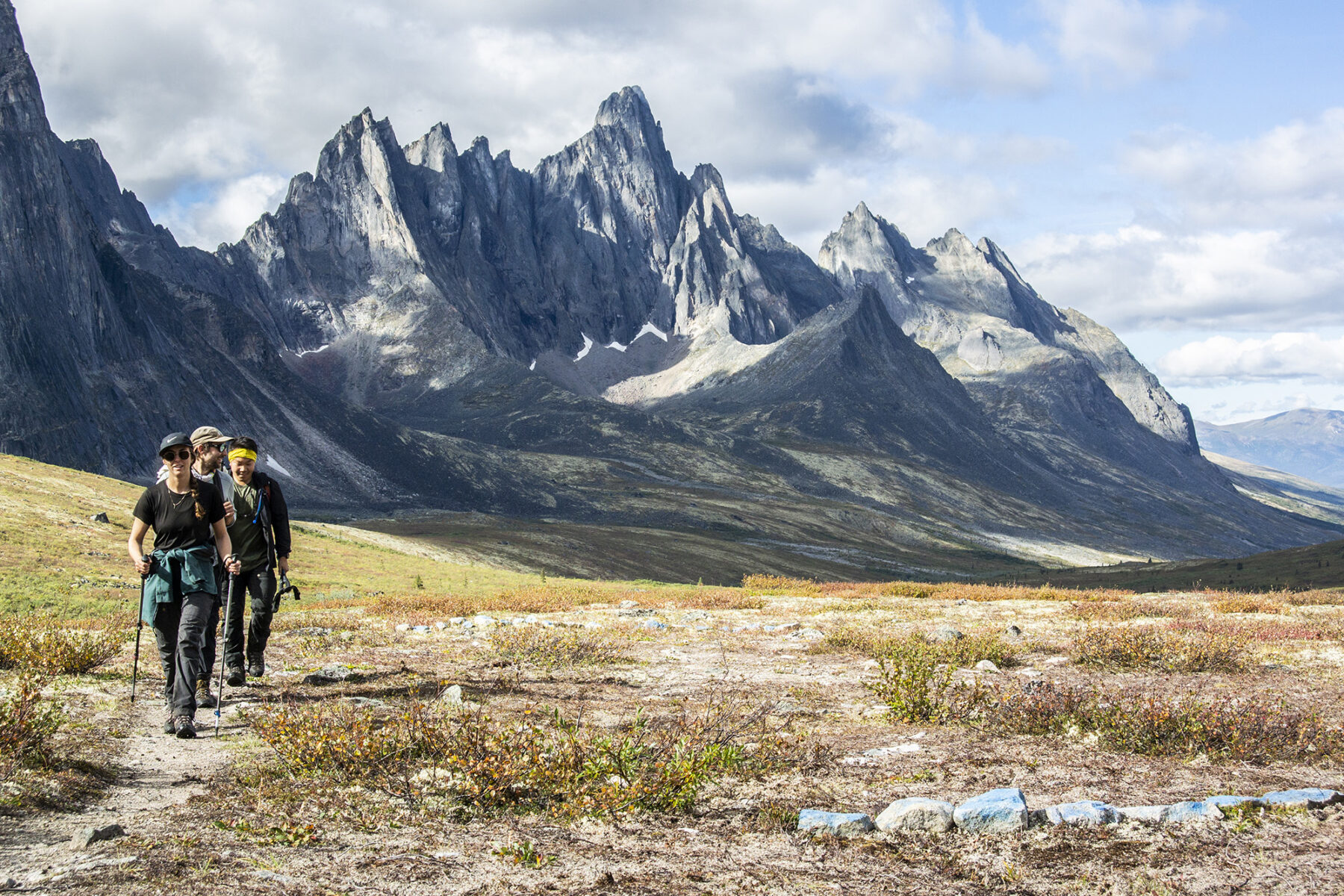
To the Far North
The Yukon Territory is vast. At 482,443 square kilometres, it contains an incredibly diverse mix of landscapes, from mountain ranges and glaciers to huge lakes, immense valleys, and a number of wild waterways. The territory is 80 per cent wilderness, which has resulted in an abundance of wildlife, including iconic species such as grizzly bears, wolves, moose, caribou, bald eagles and more.

The sparse population of around 41,800 residents includes 14 First Nations, resulting in a thriving culture, with the capital of Whitehorse worth a few days of exploration (you can discover the territory’s First Nations culture – and more – at the McBride Museum. On account of the Yukon’s wilderness to people ratio, there’s a huge amount of space for amazing experiences, including the chance to get up close to one of nature’s most famous spectacles…
The best light show on the planet
The Yukon Territory is located below what is known as an “auroral oval” (where the aurora displays most strongly). The ‘bowl’ is a band around the earth that has been ‘pushed’ or moved by strong solar winds toward the dark (night) side of our planet. That solar wind disrupts the earth’s magnetosphere enough that particles from both the wind and the plasma of the magnetosphere ionise after precipitating in the upper atmosphere. The result of that ionisation is that brilliant and always varying emission of different light in the night sky.

There are two seasons of aurora viewing, kicking off with autumn (August-September; Dawson City is a great location for aurora viewing at this time of year), and then the winter season, from October to April. There are plenty of Northern Lights based tours and activities on offer, with the majority based out of Whitehorse, as well as from some wilderness lodges.
A tale of two seasons in the Yukon
Whether you visit the Yukon for the winter viewing season or the autumn, devoting a number of days to enjoying the Northern Lights’ distinctive displays is an absolute must. The best thing – and this applies to either viewing season – is that you don’t have to while away the daylight hours waiting for the lights; there are myriad activities on offer during the day, too.
From wildlife viewing and ice-fishing, to sled-dog adventures, fat-bike riding, cultural enrichment, and snow-shoeing – not to mention enjoying the warmth of a wilderness lodge’s fireplace – a visit to the Yukon in autumn and winter can (and should!) include more than the aurora.
This mix of slightly longer nights and shorter days of light make autumn/winter ideal for aurora viewing, thanks to the extended period in which the dancing lights can be viewed. It also opens up the days (after a post-aurora nap) to an array of outdoor activities, including the Yukon icon that is dogsledding. It is an absolute must-do; being dragged on a sled across a vast white-clad landscape, by a team of strong and surprisingly fast huskies (and other sled-dog breeds) is a fantastic way of exploring the more remote parts of this spectacular province. It really is an absolute blast.
A standout of the Yukon Territory – and this is regardless of the season – is its abundant wildlife – even in winter. You may spot the elusive and shy lynx, along with the chance to see wolves, coyote, and a number of bird species. This doesn’t have to mean camping out in the snow to view these species (and others), either. The Yukon Wildlife Preserve, around 30 minutes’ drive from Whitehorse, includes a dozen species and offers a brilliant opportunity to both view and learn more about some of the Yukon’s native fauna. It is open all year round.
A welcome like no other
The Yukon Territory is renowned for many things (think: wildlife, wilderness, indigenous culture, gold-rush history, adventure), and this includes the Yukon people’s welcoming nature and hospitality, from campgrounds and hotels to its famous wilderness lodges. For visitors keen on having a ‘Yukon basecamp’ where you can enjoy day-time activities, friendly and knowledgeable hosts, meals cooked utilising native produce, plus prime Northern Lights viewing – all from the one pristine location – a lodge stay is perfect.
Southern Lakes Resort, perched on Tagish Lake, is situated within the traditional territory of the Carcross/Tagish First Nation. During autumn and winter, guests enjoy northern lights viewing, a half-day snowshoeing experience, which is a do-not-miss, and snowmobiling. Oh, and best of all: the lodge has a half-day dogsledding adventure, too, taking you and your team of Alaskan huskies through the Klondike Gold Rush backcountry.
From coast to canyons onboard Rocky Mountaineer
Riding the rails of Canada’s renowned Rocky Mountaineer is a feast for the senses.
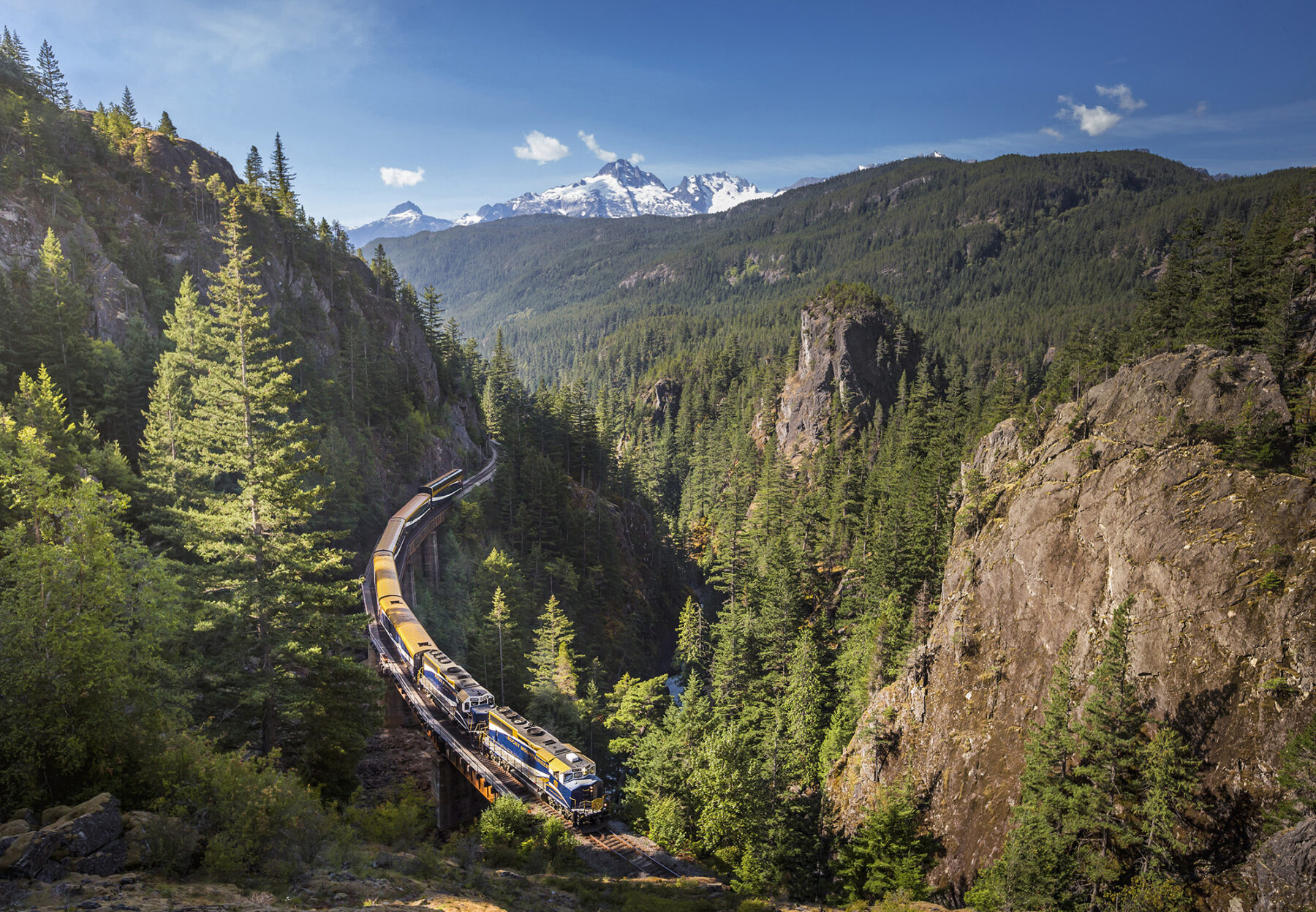
There’s a bear. Out there. Lumbering along at the edge of the trees, barely registering that a train full of excited people is clitter-clattering by, cameras clicking.
Other times, passengers on Rocky Mountaineer ‘ooh’ and ‘aah’ at the view over majestic, craggy peaks, ethereal forests and tumbling rivers needling down rock-hewn gorges as the train passes over bridges that surely tested the engineering know-how of the track’s builders back in the 1880s.
That first, vital Canadian Pacific Railway (CPR) link from coast to coast in Canada led to some of Canada’s best-known luxury hotels being built in locations that are just as awe-inspiring today as they were back then. In fact, the owner of the CPR, William Cornelius Van Horne, selected the location for the legendary Banff Springs Hotel – now the Fairmont Banff Springs – himself, saying “If we can’t export the scenery, we’ll import the tourists.”
He built it, and the tourists did come, and are still coming. Many of them on Rocky Mountaineer.
Climb Onboard Rocky Mountaineer
One of the best-known tourism ventures in Canada, Rocky Mountaineer set off on its inaugural trip in 1990. It was a two-day, all-daylight journey through Western Canada and the Canadian Rockies, and the rest, is rail history.
The single route from those early days has blossomed into four routes: three in Western Canada, and one in Southwest United States. ‘First Passage to the West’, runs between Vancouver and Banff with an overnight stop in Kamloops. ‘Journey through the Clouds’ will take you between Vancouver and Jasper – also with an overnight stop in Kamloops, and ‘Rainforest to Gold Rush’ links Vancouver and Jasper, with overnight stops in both Whistler, and Quesnel.
The newest route is the ‘Rockies to the Red Rocks’ service, the first in the USA, that runs between Denver in Colorado and Moab in Utah, with an overnight stay in Glenwood Springs.
While the vistas on the routes are extraordinary, the service and amenities are equally as impressive. In Canada, guests can choose between two different styles of train coaches – GoldLeaf Service or SilverLeaf Service.

GoldLeaf Service, which was first launched in 1995, continues to be a highlight for Rocky Mountaineer passengers, who love soaking up the spectacular views of the Canadian Rockies through the striking curved-glass windows on the top of the bi-level train car. It is the perfect pairing; views from luxurious seating upstairs, while gourmet dining awaits on the lower level, which also has large glass windows to allow the views in while you dine on delectable meals.
There is an exclusive outdoor viewing platform downstairs in GoldLeaf Service, which is wonderful to breathe in the mountain air and feel the forest-tinged breeze on your face. It is also excellent for photographers.
SilverLeaf Service has panoramic windows, with guests relaxing in their comfortable seats, with gourmet meals and beverages brought right to their seats.
Gourmet Delight
When on Rocky Mountaineer, guests are not just seeing Canada, with its wildlife, majestic scenery and idyllic lakes, they are tasting Canada, which has an embarrassment of riches when it comes to produce. Rocky Mountaineer’s Executive Chef, Kaelhub Cudmore, refreshed the culinary program for 2023 and 2024, saying: “On Rocky Mountaineer, you can expect to be fed bright, fresh food that speaks to the journey you’re on.”
Vancouver Island born and raised, Cudmore had a passion for the culinary industry at a young age. He has a deep appreciation for food and travel, developed organically as he worked in various locations offering everything from salmon fishing to remote heli-skiing.
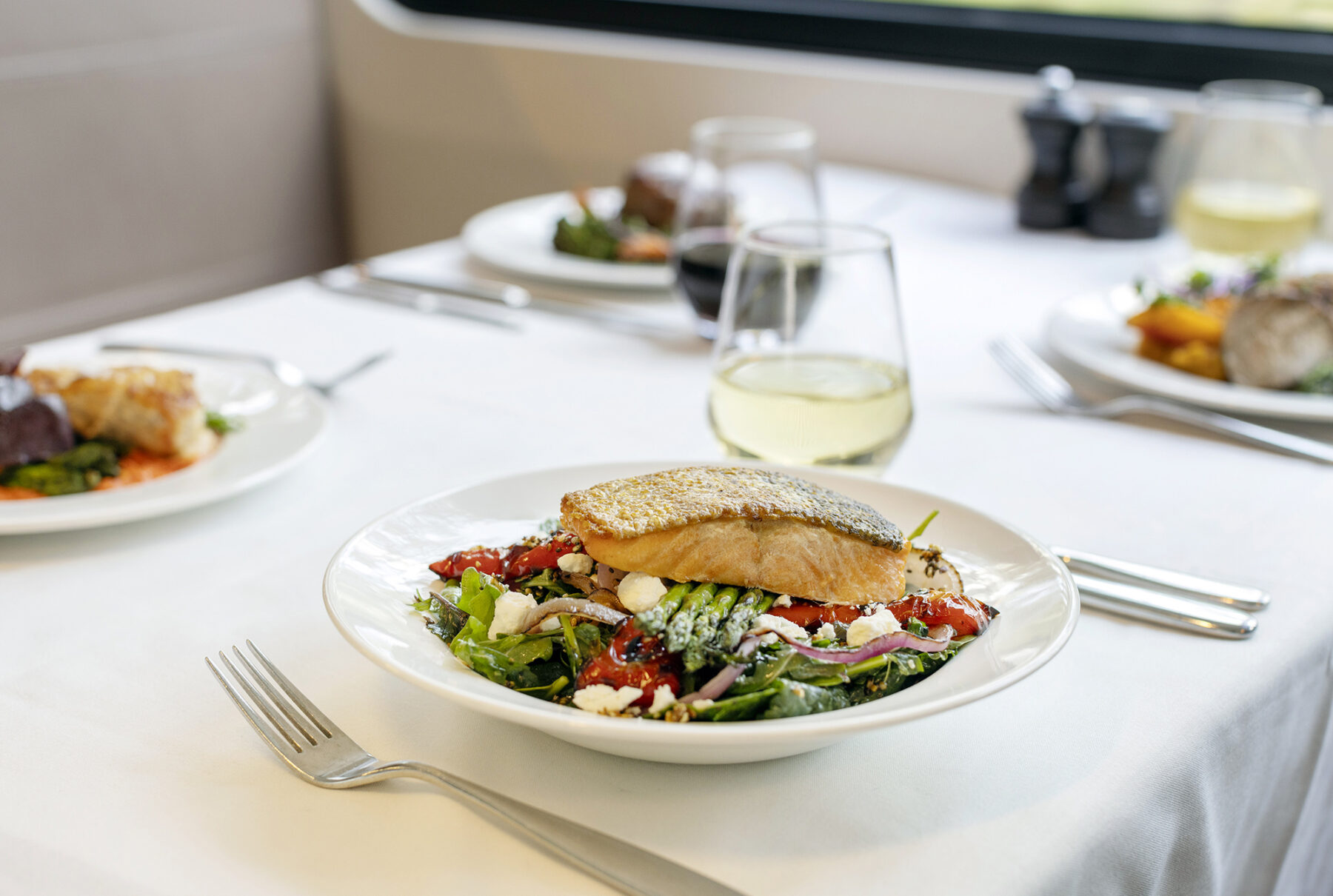
His resume is impressive, having worked at Victoria’s iconic Fairmont Empress Hotel, spending almost 10 years at Clayoquat Wilderness Resort as it blossomed into the exclusive Relais & Chateaux property it is today, and working as a leader in Seabourn’s Thomas Keller program. The luxury cruise line made quite a splash with Keller’s innovative dining at sea program, and there is no doubt Cudmore learned a lot about preparing and presenting gourmet meals in moving spaces.
Cudmore says he is an “ingredient-driven chef,” placing high-quality local ingredients at the forefront of his menu, supporting local agriculture and artisans in his kitchen.
The talented Executive Chef’s aim was to create a connection between food and land, reflecting the landscapes guests see through the glass, and bringing it inside onto their plates. Local products that you might taste on the menu include Alberta beef short rib, Dungeness crab stuffed ravioli, and Lois Lake steelhead as well as verjus from Vancouver Island, handmade pasta from Port Moody, bee pollen from Surrey, and tasty macarons from Vancouver’s Granville Island.
Rocky Mountaineer’s wine list also reflects the Canadian landscape, with guests able to experience a selection of wine from British Columbia’s most respected and revered wineries.
Cudmore says: “The new menu is based on the idea of telling a story. Each journey has its own menu that really features the area it travels through. There has been a lot of research: riding the train to express the terrain we travel through.”
Authentic Journeys
The only thing that is better than doing Rocky Mountaineer is adding other adventures to it. Adventure World has a number of itineraries that include Rocky Mountaineer, such as the seven-night ‘Authentic Canadian Rockies’ and ‘Sip and Savour Canadian Flavours’ itineraries. The seven-night ‘Authentic Canadian Rockies’ itinerary starts in vibrant Vancouver, where you can opt to rest or explore some of the harbour cities highlights, from Capilano Suspension Bridge Park to a foodie tour of Granville Island Market, or perhaps a bike tour through Stanley Park.
Day two you’ll board the legendary Rocky Mountaineer, travelling in GoldLeaf Service, marvelling at the landscape skipping past the windows as you socialise with other passengers and sit enthralled as the team of onboard hosts share rich, historic stories of the rail line, geological marvels, communities, and Indigenous peoples along the routes. The train will take you into the heart of BC, with highlights including Hell’s Gate in the Fraser Canyon, and the steep terrain along the Thompson River.
After a night in Kamloops, enjoy your beautiful glass dome, the company, and the gourmet meals on board as you venture into Alberta, following the North Thompson River through the Monashee and Cariboo Mountains and then into Jasper.
Once off the train, you’ll spend several days exploring Jasper, Lake Louise and Banff, before finishing your trip in Calgary. Highlights include a mountain -top cooking lesson, wildlife viewing in Jasper NP, journeying down the Icefields Parkway, taking in the beauty of cobalt blue lakes such as Moraine Lake, Bow Lake, Emerald Lake and Lake Minnewanka.
The ’Sip and Savour Canadian Flavours’ itinerary is heaven on a platter for foodies, with local tastes and flavours, from beavertails and poutine to fine wines and cider. The 11-night itinerary sees you travelling on Rocky Mountaineer for two days in SilverLeaf Service, flying in a float plane and cruising to Victoria by ferry to experience some of Western Canada’s finest culinary adventures including riding to a western cookout by horseback or covered wagon. Add idyllic lakes, wildlife, soaring mountains and striking glaciers, and you have the experience of a lifetime.
William Cornelius Van Horne was right. Tourists would most definitely come to see this beautiful part of the world. And Rocky Mountaineer plays a big role in that.
Ultimate Canada: There and back again with Adventure World
Adventure World has been sending travellers to Canada for over forty years, let its destination experts create an authentic Canada trip for you – 1300 263 055 www.adventureworld.com.au
For more information, Adventure World’s online Canada portal has all the info on the amazing experiences it offers in this awesome country.


